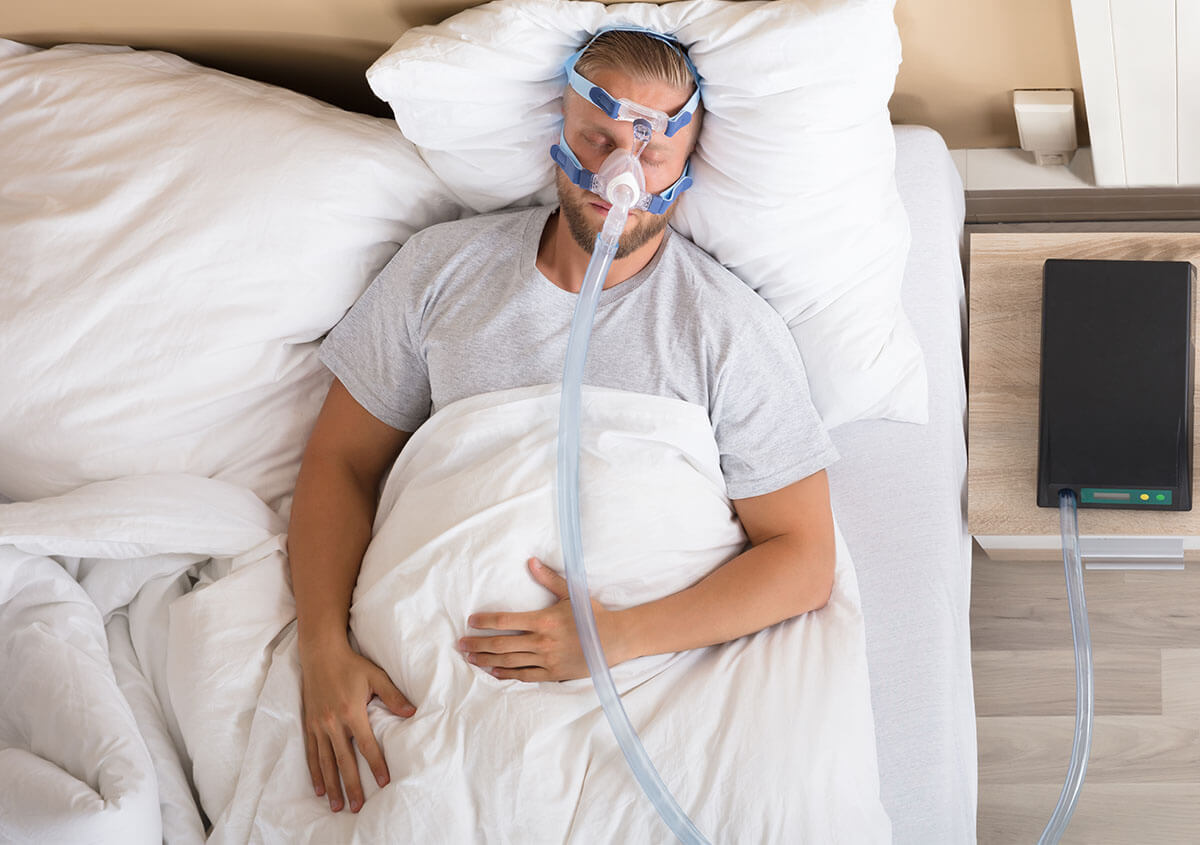Wake up to an easy, comfortable alternative to CPAP at the dentist’s office
We Smile Dentistry keeps more than the teeth and gums healthy. Led by Dr. Giulio Spagnuolo, our office in London, Ontario, supports the health of interconnected oral and facial tissues and structures. In fact, we effectively treat and manage sleep apnea with conservative, lightweight, and easy-to-wear dental appliance therapy. Unlike conventional treatments for sleep apnea, these devices have a high patient compliance rate. Our customized oral appliances actually get worn and can then alleviate or completely eliminate the effects of sleep apnea. Many potentially severe complications are also avoided with effective treatment.
The problem
A type of “sleep-disordered breathing,” sleep apnea comes in three primary forms. The most common type, obstructive sleep apnea, is characterized by lax throat tissues, which partially or entirely block the affected person’s airway during sleep. When this happens, the air can’t flow properly. Interruptions in breathing drastically reduce blood oxygenation. You can imagine the stress that is placed on bodily tissues, organs, and systems when this chronic condition is not treated properly and promptly.
Episodes of breathlessness can occur several times each hour and may last for 10 to 30 seconds each time to resume breathing, and sleep is also disturbed. Individuals with OSA may repeatedly (and unknowingly) reawaken. These abrupt awakenings are often accompanied by gasps, snorting, and choking. Other potential trouble signs include:
- Habitual, disruptive snoring
- Never feeling refreshed, no matter how early you go to bed
- Chronic headaches, especially when waking up
- Frequent dry mouth, sore throat
- Mood swings, irritability
The Public Health Agency of Canada reports that 3% of Canadians aged 18 and older have been diagnosed with sleep apnea.
And one in four Canadian adults are at high risk of developing OSA. At-risk individuals have at least three of seven risk factors, including some of the symptoms listed above, as well as the following characteristics:
- High blood pressure
- Overweight
- Aged 50 and older
- Male
The dental solution
CPAP therapy has been the traditional solution to treat individuals diagnosed with OSA. This treatment involves wearing a facial mask during sleep. Continuous positive airway pressure is delivered through the mask to prevent the upper airway from collapsing during sleep. This treatment is effective but has low patient compliance. Sometimes, patients never get used to wearing a mask or being connected to a bulky, noisy machine. The machine itself can be “high maintenance” and is not made for travel. We provide a highly portable, low-maintenance, and unobtrusive alternative to CPAP therapy for patients diagnosed with sleep apnea following a sleep study.
If it is determined that you can benefit from our treatment, Dr. Spagnuolo will collect information about your mouth. This information is then used to make your custom-fitted oral appliance. These devices are small and are designed to simply slip into your mouth. They work by repositioning the jaw and tongue. These adjustments keep the tissues that are responsible for airway obstructions out of the way throughout the night. So you can breathe and sleep continuously! Our custom appliances can also be used to treat snoring. After all, snoring is caused by air vibrating against lax throat tissues. While “primary” snoring is harmless, it can be highly disruptive to partners, spouses, and other members of the household.
Call We Smile Dentistry in London, ON, at (226) 605-0042 with questions and to learn more about potential treatment options.






